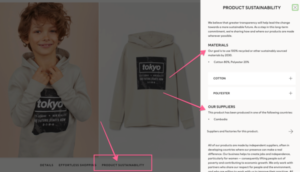I recently listened to an episode of the Ezra Klein podcast with the awesome title, “How to solve climate change and make life more awesome.”
It features Saul Griffith, whose job title is, literally, “inventor” (#lifegoals). What struck me was Griffith’s observation that most climate-related conversations are negatively framed. We’re trained to talk about what you’ll have to give up instead of how life could be so much better:
No one has presented the Green New Deal from the kitchen table out: What will it look like in my home?
Instead of burning natural gas to make your coffee in the morning, you’ll have an induction range, which [can] be programmed to cook your coffee for you in a way that’s much easier. You’ll have better air quality, which will help cure things like allergies and severe asthma. You won’t have to worry about carbon monoxide anymore. You’ll be warmed by your radiant floor heating, which won’t give you that dry mouth in the middle of the night. The car will be charged overnight by renewables like wind. The rest of your house will be powered by the solar on your roof that day.
Also, your total energy costs will go way down. We ran the numbers grossly for Australia, and if you did that package of electric vehicles, heat pumps, and rooftop solar, you would save the average Australian family about $1,000 to $2,000 a year. So there’s more money in your pocket to enjoy the rest of your life.
I think our failure on fixing climate change is just a rhetorical failure of imagination. We haven’t been able to convince ourselves that it’s going to be great. It’s going to be great.
It was a privilege to present the ELDF awards yesterday. What made all of your presentations especially strong was they were visions of how things can be better.
Using waste to recreate clothing. Using the return packaging spare capacity to increase recycling. Recycling returns that are just taking up space. Nudging suppliers to improve the lives of their workers. And on and on. The ideas that will transform the industry will be the ones that are about creation, and, last Friday, you presented a whole list of those. Congrats again to all!
Happy Holidays and Happy Reading,
Ranjan
Fashion for Good Launches a Pilot to Produce a Circular Polybag
A major new initiative from Fashion for Good, in partnership with Adidas, C&A, Kering, Otto Group and PVH, to create a truly circular polybag.
The group will be working with Cadel Deinking, a technical group that has invented the Deinking Process which can remove printed ink from plastic to increase its recyclability and is based in Alicante, Spain (countdown to Gary making a site visit…).
If you’re the type that likes to spend their holidays reading about Polybags, Fashion for Good produced a 43-page whitepaper on the initiative.
H&M’s Different Kind of Clickbait
A very deep dive from the NY Times into supply chain transparency efforts H&M.
The article informed me that every single item on the H&M website has a “Product Sustainability” option, which pops out a decent amount of information covering things like exact fiber composition and manufacturer base.

How Online Secondhand Shopping Helped Define This Decade
Teen Vogue explores how the secondhand fashion market grew over the past decade. If the subject is of interest, there is a longer report from ThredUp you should check out.
In the last three years alone, secondhand retail grew 21 times faster than the traditional retail apparel market, according to ThredUp’s 2019 report. The report states that the global secondhand market is expected to be worth $64 billion by 2028 versus fast fashion’s $44 billion and that 18- to 37-year-olds are adopting secondhand apparel 2.5 times faster than other age groups, though millennials and boomers thrift the most overall.
Sustainability in the 2020s Will Depend on a Circular Fashion Economy That Makes New Clothes Out of Old Ones
A great high-level piece from the Jan 2020 Vogue edition:
In fashion, the inverse of value might be disposability: If your T-shirt costs less than your Starbucks latte, you probably won’t think twice about throwing it out when it rips. Value isn’t just about price, of course; you might cherish a $50 vintage dress more than a designer bag. But therein lies the difference: You value the dress because it’s rare, or because it’s by a certain designer, or simply because it has a story. It may even be more valuable now than it was 30 years ago. Your old T-shirt, on the other hand, is hardly a treasure—and who would want it, anyway? It’s stained, it’s got holes, it’s no longer bright white.
Goldman Sachs’ commercially driven plan for sustainability
We’ve reached the point in the sustainability conversation that the CEO of Goldman Sachs is writing op-eds in the Financial Times and saying things like:
Companies have traditionally treated sustainability as a peripheral issue, focusing narrowly on the way they manage their impact on the environment. We don’t have the luxury of that limited perspective any more. The evidence of climate change is clear. And, people in both developed and developing countries are questioning the ability of their economies to reward their hard work.
There is not only an urgent need to act, but also a powerful business and investing case to do so.
Note – the article is paywalled, but you can find the text here (🤫).
Conscious, ethical and cruelty-free: a guide to the language of sustainable fashion
A quick roundup defining some of the major terms in the fashion sustainability conversation.
A VIDEO
This is possibly the most informative and entertaining 29 minutes you can spend to get a broad overview on sustainability and fashion (and they hilariously cut into Zara and H&Ms efforts).





